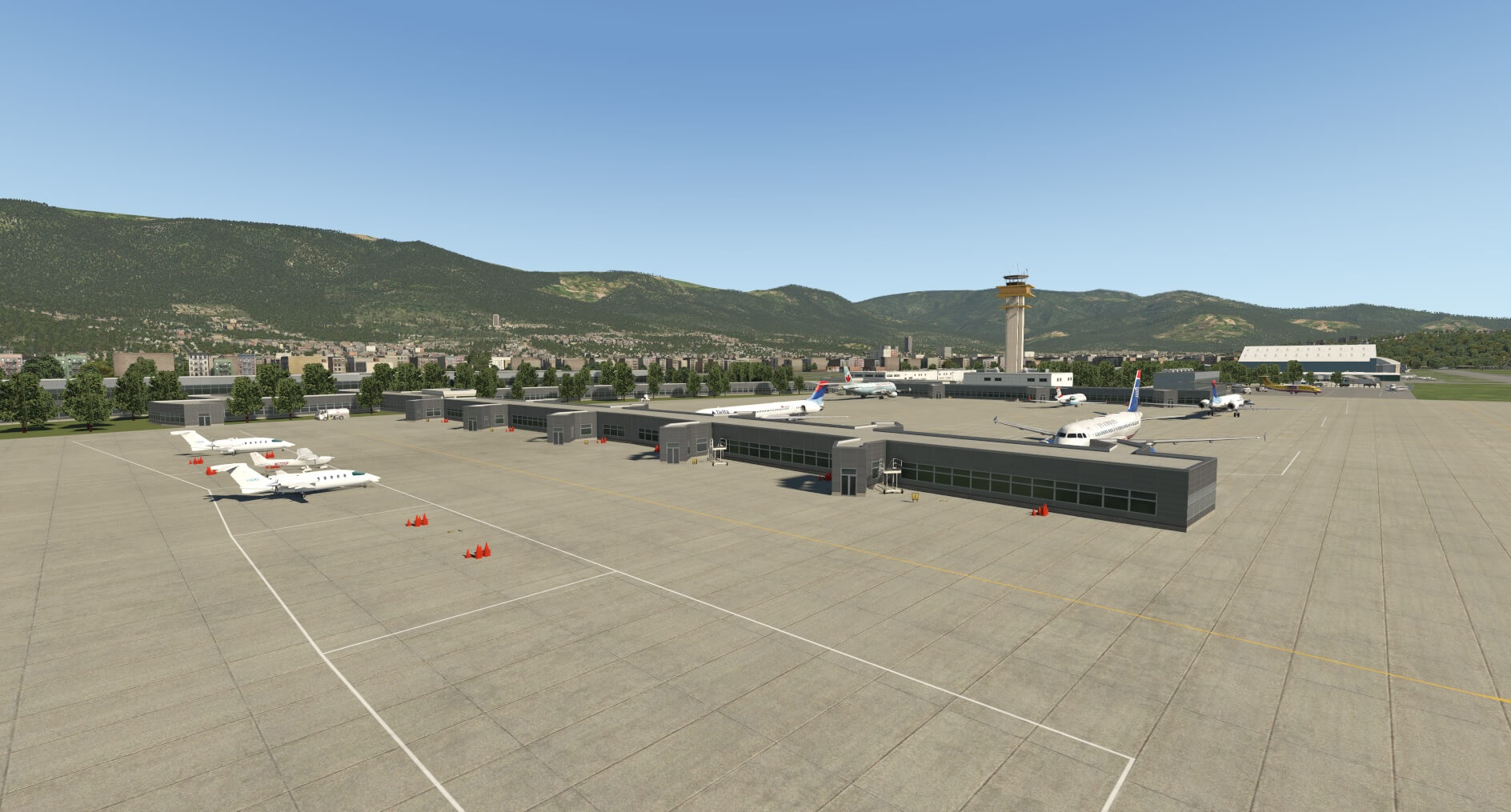Ron Burgess lives in the northwest of England and started building Gateway airports in August 2017. In a short amount of time he has gained some impressive stats with 135 3D submissions. Some of his outstanding airports include: Key West International (KEYW), Saint Barthelemy Island (TFFJ), Southampton (EGHI), and Kansai International (RJBB).
Why did you choose X-Plane as your flight simulator?
I flew many early flight sims (tried most) and then MSFS in all its various incarnations. Just got dissatisfied with its lack of realism related to flying even though I have never actually flown a real plane, except a helicopter for a few minutes in a Christmas present taster flight. MS’ last effort was never fully realised and although I tried others, I virtually stopped using any flight sims. Then I saw an ad for X-Plane, downloaded the trial and bought it 2 weeks later! (Birthday pressy! Well 3 weeks before, but I couldn’t wait.) I went through a massive learning curve learning how to fly, start-up, flight plan, program the FMS, etc. but this was what I wanted to learn. The more I learnt the more I realised what pilots have to know and understand. X-Plane can be what you want it to be: fun flying, a serious hobby for flight sim enthusiasts, or experience for real and/or learning pilots. Some of the set-ups I see others have make me really envious. I haven’t tried the recent V.R. development–that will be awesome I expect, especially as it continues to develop.
What motivates you to develop X-Plane scenery?
I had to look at my first airport submission to see what that was to confirm my answer. I expect this reason is what gets many “artists” started. Flying from my local airport, in the sim and in real life, I spotted “things” missing or not quite right. This prompted me to try my hand at scenery enhancement, improving what was already done. WED blew me away! And that was 2 years ago. Having programmed (in a past life) the abilities it had were incredible. It did take some learning and was a little “wrong-handed” (right mouse to move, not left like Google Earth). I made MANY mistakes and had to do some things MANY times, until you learn some of the tricks, like CNTRL Z to undo deletes and mistakes, locking sections, how to duplicate etc. etc. The videos by Jan (Vogel) are superb and any artist HAS to watch them. They are what enabled me. Even after you get going, you go back to them to pick up more–it’s like re-watching a film and spotting what you missed first time round.
WED too has come along “enormously” in the last 2 years. Its capabilities have leapt forward thanks to Michael (@triplemon). Unfortunately this means you have to go back and add in those extra details that add to the realism, both visually and flying. E.g. lines, facades implementation, jetways, piers, runway use, etc. The improvements to WED have made scenery creation easier especially with “anti-airport accidental moves” validation checking etc. Developing these makes you learn a lot about flying and airport operations. Researching the airport is an art form itself, especially some countries which have little readily available information or anything approaching decent resolution or even recent satellite imagery. It’s easy to stop at a moment’s notice with a quick save and pick up again later. Finding a way to achieve a believable/realistic visual outcome is my goal. I even used caravans as airport shuttle service trains. Not saying where! If you spot don’t tell J.!
Do you have a favorite airport that you have submitted to the Gateway?
Favourite ! Hmm… This varies, everyone probably favours their local (major) airport, however this is going through a £2billion+ upgrade, massive–even daily–changes, so it’s pointless touching it again for 2 years probably. Could be one of the most recent ones: Key West KEYW, Sedona KSEZ, St Barts TFFJ (this one had many difficulties not least the base mesh). It’s finding a way to encompass these details and produce something that is recognisable to people/pilots that have actually flown in. I always put most effort (accurate detail) into airside and reduce as you move out from the boundary fence. Putting in recognisable (shaped) buildings and local objects (sports arenas, tree lines, forests) that would be discernible and recognisable from a few hundred feet/ on approach/depart. The most recent also tend to be favourite as they are better than my early ones. (I shudder at the thought of some of my early efforts. How they got accepted, God (Julian) only knows.) Probably they were better than the ‘bots 2D-only effort (just!).
Do you have any advice for newbie Gateway artists?
Easy: 1. Jan’s videos. 2. Save regularly. 3. Read the WED Q&A sections on the ‘.org. I learnt a lot by reading questions and answers by other fellow artists and Michael’s answers. He especially answers and explains why, with the implications of what happens if you don’t do something. 4. The recent guides from Michael and Julian. 5. Jan’s videos again. My first effort was rejected (rightly) and it’s the rejections that make you better as well. I still get rejections for basic mistakes, but with more complex airports as you continually expand your own perimeter of detailing and forget to expand that boundary by an extra foot. Or a tug goes walkabout (accidental placement), a pilot leaves the brake off and a plane rolls into a building (my excuse anyway) really because you didn’t check “taxi&flow” view after moving or placing a “start”. Julian has some magic ability to find these mistakes! There are a lot of helpful and learning artists on the org. Even the MOST experienced are learning and finding out nuances daily.


